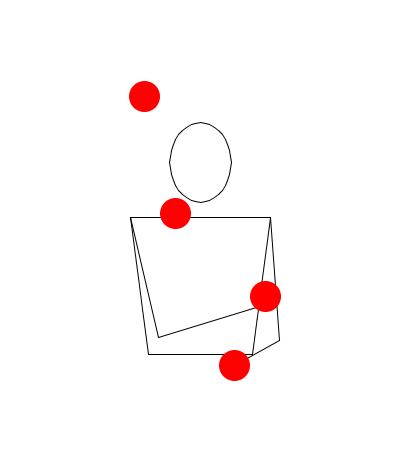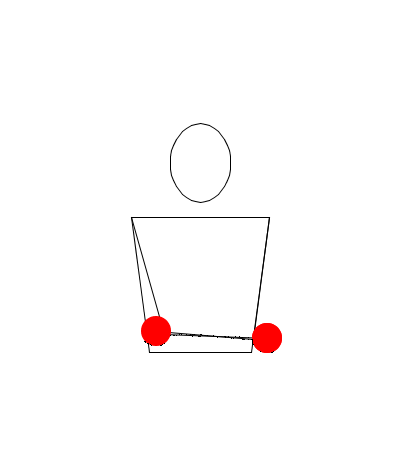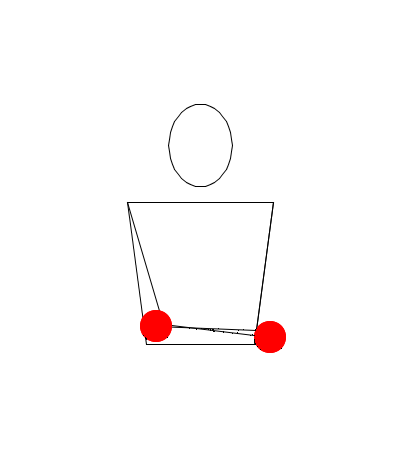534 Mills Mess
Other Tutorials:
- Siteswap: 534
- Difficulty (1-10): 8
- Prerequisites: Four Ball Mills Mess, 534, 531 Mills Mess (optional)

The 534 Mills Mess is a
variation of the 534 (or Four Ball Mills Mess) in which the arm motions and
throw paths of Mills Mess are applied to the 534 siteswap. Theoretically
there are three different ways in which such a combination could be
performed, but in practice most jugglers make the "5" throw under-the-arm
and then go from there. Unsurprisingly it is recommended that you already be
comfortable with both the 534 and Four Ball Mills Mess before attempting
this trick, though also knowing the 531 Mills Mess would probably help as
well.
To begin learning the 534 Mills Mess, start with two balls in
your dominant hand and one ball in your non-dominant. Cross your dominant
arm underneath your non-dominant arm, and then make a fairly high
under-the-arm throw from your dominant hand. Shortly after this throw is
made (before the ball reaches its peak), throw the ball in your non-dominant
hand as a fairly low Cascade throw toward the center of your body. After
that throw is made you will uncross and then begin to recross your arms. As
your dominant hand (which is still holding a ball) begins to recross over
your non-dominant hand the Cascade throw made by your non-dominant hand
should be descending. Make a medium (shorter than the first throw but higher
than the second) throw from your dominant hand toward the center of your
body, clearing space for your hand to catch the Cascade throw as it finishes
recrossing. The high throw, now descending, will be caught under-the-arm by
your non-dominant hand, followed by the medium throw which will be caught by
your dominant hand.
Practice this on both sides. To add in the fourth ball, start
with two balls in each hand. Make the same three throws that you did
in the previous step then catch the Cascade throw with your dominant hand
and recross as usual. Notice that you now have an extra ball in your
non-dominant hand. Instead of simply waiting to catch the high throw you
will instead make an under-the-arm high throw from your non-dominant hand,
clearing space for it to catch the previous high throw. Catch the medium
throw with your dominant hand as you normally would, and then also catch the
second high throw using your dominant hand.

Once again, practice this on both sides. Notice that the
first and last throw (the two high throws) are mirror images of each other.
To run the full pattern, make a short Cascade throw from your dominant hand
before catching the medium throw. Then just repeat the other throws and
catches performed in the step above, this time using the opposite hand
configuration. Connecting the two sides of the trick can be difficult, but
unfortunately there is no way for a tutorial to really help; your body must
simply get used to it.
